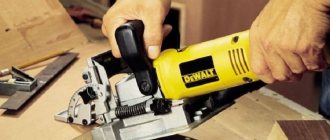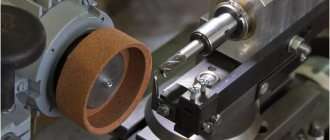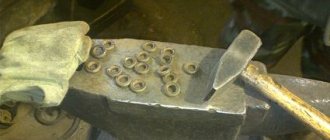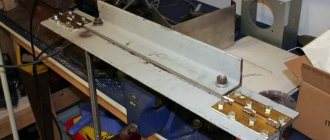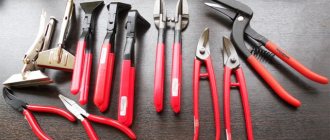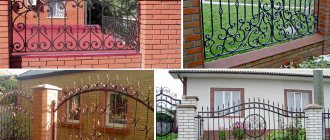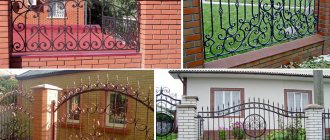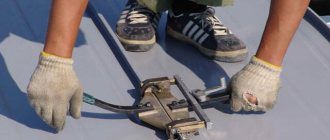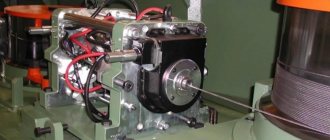A manual wood router is a truly universal machine. In capable hands, it can replace most of the machine park with a well-equipped carpentry workshop. Considering that the price of a hand router is quite affordable for every home craftsman, and replacement cutters are sold both in sets and individually, the need to have such a universal tool in your arsenal is obvious.
Specific working techniques are also available that are characteristic only of a manual milling machine and are impossible on “large” machines. The question is interesting and capacious, so it should be considered in detail.
What is a router and what is it for?
A hand router is a power tool, which is an electric motor with a collet for installing a cutting tool on a shaft.
Integrated with it is a platform or base, a kind of desktop, which is capable of moving along guides and being fixed in a given position.
Using the platform, the cutting depth is set. There are two handles on the sides, by which the machine is held in the desired position or applied to the workpiece.
The milling cutter is designed for cutting parts made of different materials:
- Solid wood;
- Chipboard, including laminated chipboard;
- MDF;
- Fiberboard;
- Aluminium, duralumin;
- Soft plastic.
Using a hand router, different types of material processing can be performed. These include the following operations:
- Milling of recesses of various shapes - grooves, sockets, grooves and other elements;
- Profiling edges - creating shaped (curly) surfaces, milling quarters;
- Milling of special structural elements - recesses for hinges, locks, handles, tenons and sockets for them;
- Trimming curved and complex edges of furniture parts or special elements.
To ensure the accuracy and cleanliness of the cut, the design of the router has a lot of adjustment and adjustment elements. With their help they produce the following
- Changing the shaft rotation speed;
- Setting the immersion depth of the cutting element;
- Pre-set depth for quick cutting mode changes.
Important! For mass production of large volumes of products, a manual milling machine is not suitable. It is most rational to use it only for domestic purposes or in small workshops engaged in small-scale production of custom-made products.
Helpful Tips and Tricks
- The more cutters in the workshop, the more opportunities the master has. Only a few cutters are shown above, but there are hundreds of varieties on sale today;
- You shouldn’t waste your money by buying cutters on the principle “maybe they’ll come in handy someday,” but you shouldn’t limit your capabilities either. The cutters that are required are purchased;
- cheap cutters do not last long;
- if the wood begins to burn and smoke, the cutter is dull;
- if a new cutter smokes, it is thrown away, because It's a fake copy;
- blunt cutters are sharpened on a fine abrasive from the reverse side. With a complex profile, it is impossible to sharpen it.
Working with a router requires care and high precision. With its help, you can achieve adjustments down to fractions of a millimeter. You immediately need to get used to precise depth adjustment.
As a result, a router has become an indispensable tool in a modern carpentry workshop. With its help you can do a variety of things, including expensive ones. You can start using a cheap router. But working with a high-quality tool is much more convenient and interesting.
Main types of nozzles
Main types
For milling work, end mills with a shank diameter of 6.8 or 12 mm are used.
They are sold individually or in sets that include the most popular types of cutters.
There are sets with 7 mm shanks, but it is difficult to find a collet for them. Depending on the purpose and shape of the cut, there are edge and groove cutters. Edges include:
- Profile;
- Conical;
- Moulded (moulded, quarter-rolled);
- Disk;
- Fillet.
A common feature of edge cutters is the presence of a bearing that acts as a stop. Groove cutters include:
- Rectangular (straight);
- Filling;
- "Dovetail";
- V-shaped.
Groove cutters do not have thrust bearings and allow you to cut both on edges and on faces. There are straight cutters with a bearing at the top, just above the cutting edges. Usually its diameter corresponds to the size of the cutting part, which allows you to cut curved shapes according to a template. Such cutters are called turning cutters. They are not included in standard kits; if necessary, they must be purchased separately. Almost all cutters are available in several standard sizes. To make a recess of the required size, you need to select a cutter of the appropriate diameter or profile.
Milling cutters
In order to carve wood using a manual milling machine, you should prepare several types of cutters.
The most popular and in demand cutters:
- Profile - to create a shaped configuration of the edges of the product.
- Conical - used to remove chamfers from poses at an angle of 45 degrees Celsius.
- A disc or rebate cutter is designed to create a groove in an edge.
- Galtein - designed for cutting round grooves on the edge of a figured product.
- Edge - used to form spikes and grooves.
Preparation
To install the cutter in the chuck, the router is laid on its side. Some types allow you to disconnect the engine with the cartridge from the platform without changing its settings. Others do not provide this option, so most often you have to lower the base as far as possible. The cartridge is unscrewed using a wrench, which is included in the package.
The cartridge is fixed in immobility using a special button located above the point where the shaft exits the housing. It is not present on all types of milling cutters; sometimes you have to fix the shaft with a wrench and unscrew the chuck with another.
It is not necessary to remove the union nut completely, but sometimes this has to be done if the cutter is clamped too tightly in the collet. By gently tapping on the side surfaces and turning the shaft, the collet is loosened and the jammed cutter is removed.
The nut is screwed on, the new cutter is inserted into the collet approximately 20 mm. Some cutters on the shanks have special marks indicating the minimum and maximum immersion depth, but most of them are installed by eye. If the installation depth is too small, sharp feed may cause deformation of the cutter and damage to the workpiece. This is dangerous, since the maximum rotation speed of the router shaft is 30,000 rpm or more. A cutter flying out of a collet while moving has great destructive power; if it hits a person, the consequences can be very undesirable.
Attention! It is prohibited to screw the union nut without a cutter installed, as this will break the collet.
Setting the milling depth is as follows:
- The router with the base lowered is installed on a flat platform;
- The cutter is lowered all the way and fixed;
- The depth indicator slider is set to zero;
- The depth stop is raised to the required amount and locked with a screw;
- The cutter is unlocked and lowered until the depth stop stops against the adjusting screw, after which it is fixed again.
It is recommended to check the set depth on a test piece so that adjustments can be made if necessary. You should not immediately make the depth too large; this will cause the router to overheat and create an excessive load on the electric motor. The recommended depth per pass is 4-6 mm.
Speed setting
The first stage is setting the rotation speed of the cutting attachment. The recommended cutter diameter and corresponding speed levels in millimeters for different materials are shown in the table:
| Material | Diameter of cutting attachment, mm | Speed level, mm |
| Softwood: Coniferous | 4-10 | 5-7 |
| 12-20 | 3-6 | |
| 22-40 | 1-3 | |
| Hardwood: beech, oak, acacia | 4-10 | 5-7 |
| 12-20 | 3-4 | |
| 22-40 | 1-2 | |
| Drywall | 4-10 | 3-7 |
| 12-20 | 2-4 | |
| 22-40 | 1-3 | |
| Lining, plastic | 4-15 | 2-3 |
| 16-40 | 1-2 |
Basic rules of use
In this chapter we will try to answer the question: “How to work with a hand router correctly?”
A high-quality result is possible only if certain rules and working conditions are observed. These include the following wood carving requirements:
- It is necessary to work only with a sharp tool. If the treated surface is burnt, fleecy or has many small chips, the cutter should be replaced;
- The workpiece must be securely secured using clamps or other devices. You cannot hold the workpiece in your hands;
- The feed of the router should be smooth and leisurely, without jerking. Do not try to immediately remove a thick layer of material. In some cases, the excess mass is pre-drilled in order to remove a small remainder with a milling cutter;
- The cutting tool is changed only when completely disconnected from the network.
Example of table top milling:
Compliance with these requirements should become a prerequisite for work for a home master.
The cleanliness of the cut is ensured not only by the degree of sharpness, but also by the cutting speed. The higher the number of revolutions, the cleaner the processed surface. For hard materials - aluminum, dense wood, etc. — the shaft rotation speed should be reduced slightly so as not to overheat the cutting edges of the cutter.
When milling edges, the feed is made so that when moving away from you, the part remains to the left, and vice versa. If you need to make a groove, the direction of movement does not matter.
Let's look at common techniques for working with a hand router.
How to cut a circle
In order to cut a circle with your own hands using a router, you need to use special templates or devices.
First of all, it is necessary to clarify what exactly is meant - you need a part in the form of a circle, or a hole.
The delivery set includes a parallel stop.
If you drill a hole in it, you can make a simple circular jig. You need to turn the stop upside down, screw it in the center of the future circle onto a screw, use clamps to set the desired diameter of the hole and cut it in a circle. Sometimes the kit comes with a compass rod, which makes it even easier to make round holes.
When a circle is needed, a template should be used. It is a sheet with a hole of the required diameter. It can be made from plywood or fiberboard, which is recommended to be glued in half. This will result in a stiffer and thicker sheet, from which a high-quality template will come out.
The diameter of the template depends on how the emphasis will be made. If you rely on the base itself, then the diameter of the template should be increased by the amount of the platform radius plus the radius of the cutter. In cases where the emphasis is on the copy ring included in the delivery set, the diameter of the template is equal to the sum of the radii of the cutter and the outer convex part of the ring.
As a template, you can also use a ready-made circle into which the copy cutter bearing rests. The easiest way to fix it is with double-sided tape, after cutting off the excess material with an allowance of 2-3 mm.
The quality of work depends on the accuracy of the template. Usually it is cut out with a jigsaw, trying to maintain the shape as accurately as possible. In some cases, a round hole is cut using a jig with a clamped cutter.
Sampling quarter
Selecting quarters with a manual router can be done in several ways:
- Using a rip fence;
- Using an edge cutter with a smaller diameter bearing;
- With the machine platform resting on a flat bar, fixed at the required distance from the edge.
The first option is used when there is a smooth edge and a large quarter size that requires several passes. The second method is used to obtain the same quarter width, since only the immersion depth of the cutting part of the cutter can be adjusted. The third option allows you to make a large-sized quarter when the outer edge of the workpiece is uneven or unprocessed. Wide quarters have to be done in several passes, each time moving the stop a few millimeters until the desired width of the step is achieved.
How to choose a groove
To make a groove with a router, use:
- Parallel stop;
- A strip fixed at the required distance parallel to the groove line;
- A pair of planks between which the router platform moves.
The first two methods require accuracy and attention, since the milling machine can only be focused in one direction. If the master is distracted, the cutting line may go to the side. The third option allows you not only to avoid such situations, but also to increase the width of the groove. The distance between the slats can be increased slightly so that the width of the groove is equal to the diameter of the cutter plus the size of the gap. In this way, fairly wide recesses are made for various furniture parts, locks, and structural elements.
Edge processing, working with a template
For cutting edges, appropriate cutters equipped with a thrust roller (bearing) are used. It is necessary to pre-align the edge, otherwise the cutter will copy all the irregularities and the edge will look sloppy. In addition to edge cutters, templates are used to form a curved shape or produce a batch of identical parts. For work, a copy cutter with a bearing is used. The cutter is pulled out so that the thrust roller rolls along the template, and the cutting part processes the edge of the part.
Let's take a closer look at these working methods.
The width of the part is less than the length of the cutting part
In such cases it is necessary to use a template. The simplest option is to combine two identical parts into a pack. A bearing rolls along one of them, the other is processed by a cutting edge. If there is only one part, you will have to make a template from sheet material - plywood, MDF, chipboard or the like. It is important to accurately repeat the configuration of the part, to avoid the appearance of potholes or irregularities.
Many craftsmen do not like to resort to this method, since the template is often used only once and then thrown away. However, the quality of work is more important than labor costs. You should not spare time and effort, since it will be difficult or even impossible to eliminate defects after processing the edge.
Work for beginners
It is better to start work right away with the manufacture of a specific part for a practical product. You can try the router in operation and just like that, see how it works, and then put it in the box. But this will only show the approximate capabilities of the tool, but will not bring real results in the form of a finished product. Therefore, there will be no satisfaction from the work done.
But if you make a profile on a cutting board, bookshelf, photo or picture frame, select grooves for the drawers (lintels) of the stool and assemble it, the result will be obvious.
Work begins with defining a specific task. Further:
A suitable cutter is selected (profile, groove, groove/tenon, corner connection, etc.)
The cutter is seated in the collet and tightened well. To fix the collet spindle, different milling cutters may have either a fixation pin in the router body or a hexagon above the collet nut for fixing with a key.
The pin is pressed and the spindle is turned until it fits into the spindle hole hidden in the housing. They are secured with a key as usual; these milling cutters come with a special key.
After some time of operation, it is advisable to check the tightness of the collet. It happens that after 5-10 minutes of work the tightening becomes loose and the cutter may jump out.
Next, the most important thing is to set the cutter to the desired depth. This is the distance the cutter extends from below beyond the support platform. The same cutter with a complex profile will choose a different configuration, depending on how long it is released.
- if not completely, it will select only the profile that was released;
- if to the end, the full profile will be selected;
- if to the end, then plus a few more mm, the full profile of the cutter and the strip from the recess will remain on the workpiece.
The depth of the strip will be as many mm as the cutter extends beyond the profile.
Thus, with the same cutter of a complex profile, you can select profiles of different shapes, depending on the cutter output.
The same applies to other milling attachments. The depth of the groove will be the extent to which the groove cutter is extended beyond the support platform.
The depth of the cutter is adjusted in the following order:
- The depth position locking lever is released. The spring-loaded platform goes all the way down. To guide the depth, milling cutters have two devices:
- Ruler with scales in mm and cm.
- Swivel stand with three screws at different heights. It limits the depth of release. By rotating the stand, you get the approximate depth. Fine adjustments are made by screwing in or out. You can simply measure the depth of the outlet from below, using the end of a caliper or a ruler.
- After the depth is set, the position of the cutter is secured with a locking lever.
The latest generations of professional routers can have displays with a digital indicator of the depth of the cutter, and precise adjustment is achieved through a regulator mounted at the top.
Before working with a business blank, it is better to check what kind of sample is obtained on an unnecessary blank. The cutting depth may be less than the cutter release depth due to the unevenness of the material being processed.
Any workpiece must be securely fastened to a workbench or table. This is a must. They are most often secured with clamps of various designs. In this case, the clamp should not interfere with the passage of the router. If the workpiece is narrow and the clamp will get in the way in any case, the workpiece is cut off with a margin of length. Clamp the workpiece at the unnecessary ends. There will be no profile on them, but they are not needed and will then be sawed off.
It is important to choose the direction of movement. The cutter knives should rotate with the cutting edge towards the workpiece. This creates some resistance. If the router moves in the opposite direction, then the cutter, like a wheel, will move it. Even if you hold the tool tightly, it will jump and move jerkily, leaving an uneven profile.
Useful devices
There are a lot of devices that make working with a router easier and allow you to perform complex operations.
Most of them are designed to perform specialized types of woodworking, but there are also simpler ones that are useful for the home craftsman.
One such device is a table. The router is attached from below, the cutting organ passes through the hole and looks out. Working with such a table is reminiscent of processing parts on a stationary machine. You can install a stop, a clamp, or use a template. The advantage of this method is safety and the possibility of reliable control of the workpiece.
For copying on a scale, a pantograph or copying conductor is used. It can have a rather complex design in the form of a coordinate machine, or consist of several strips. A probe is attached to one end and is guided along a template. A milling cutter is attached to the other end, repeating all the movements of the probe and copying the reference part on its own workpiece.
There are also simpler types of devices, for example, a guide rail. It is a straight, even bar with a groove into which the ridge of the parallel stop is inserted. The tire itself is attached using clamps or double-sided tape. Useful when working with large-area parts, many grooves or other elements.
Devices for working with a manual wood router can be made independently or purchased ready-made. Factory templates are usually made of metal, durable and accurate. However, the prices for such products are quite high, which forces home craftsmen to make the necessary devices with their own hands.
Important! You should start making any additional devices after you have acquired some skill in working with a hand router and have an understanding of the meaning and necessity of having auxiliary devices.
In the video tutorial, the master teaches and shows what interesting things can be done with a hand router:
How are bodies of revolution processed?
The factory kit does not include a device for a router that allows you to cut grooves in cylindrical and conical workpieces. But home craftsmen have learned to make them themselves.
The product consists of the following parts:
- Cases.
- Movable milling carriage.
- Disk for adjusting the angle of rotation.
- Clamp for fastening the workpiece.
- Set screw.
The mechanism can be turned into a lathe by connecting an electric drill or screwdriver to it.
Safety precautions
Woodworking machines are the most dangerous type of equipment. A hand router is no exception. Working with it requires caution, accuracy and knowledge of safety regulations:
- Clothing should be sufficiently tight, without hanging ends, ties or other interfering elements;
- Wood dust is dangerous for the respiratory system and is a strong allergen. It is recommended to use a respirator, at least a regular “petal” one;
- Flying chips may get into your eyes. Most routers have a protective shield, but it would be a good idea to use glasses;
- It is necessary to hold the machine firmly in your hands. During operation, it vibrates and tends to turn in the direction opposite to the rotation of the shaft. You should not be distracted and let go of the running router;
- Recess the cutter shank into the collet by at least 20 mm and securely tighten the nut with a wrench;
- Before work, check the condition of the bearings on the edge cutters. They should not creak, wobble, or jam. If flaws are noticed, the roller must be replaced;
- First you need to start the milling cutter and wait until the working rotation speed is reached, and only after that insert the cutter into the material. If it is necessary to stop work, first remove the cutter from the material, then stop the machine;
- Always ensure that there are no nails or screws in the wood, and that there are no foreign objects or tools in the rotation zone of the cutter.
More detailed safety rules can be found in the user manual. Milling cutters from different manufacturers may have their own specific safety rules that you need to be aware of and follow during operation.
Wood milling. Lessons.
Milling is the process of processing a material by removing its parts of a certain shape and creating a configuration to obtain holes, grooves, joints, and parts of complex shapes. A cutter is a tool with one or more blades that produce cutting by rotating.
How to mill wood
There are certain rules for working with wood, following which you will preserve your health. They themselves are simple, we list them below.
- The part intended for processing must be securely fixed on the work table, without play. This condition will prevent the part from moving or falling out of the socket.
- The movement of the milling machine blades should be directed along the wood workpiece. If this rule is not followed, the quality of the edges of the cutting line and the evenness of its boundaries will suffer.
- To mill shapes of complex shapes, such as a circle, ellipse and others, it is recommended to use compasses that allow you to make curves of various radii.
How to mill wood
For milling wood, there are the following milling machines:
- Plunge - suitable for holes, grooves - the cutter moves along a vertical axis.
- Edging – suitable only for edges and chamfers. They have a guide bearing available.
- Lamellar - ideal for rounded longitudinal grooves.
- Dowel - suitable for grooves for dowels, for tongue-and-groove assembly.
Care
A hand router is an unpretentious device that does not require too complex or specialized maintenance. The main care for it consists of cleaning it from dust and chips, timely replacing the brushes on the motor and checking the bearings on the motor shaft and cutters. It is necessary to ensure the cleanliness of the guide rods and the ease of movement of the router along them.
Some experts advise covering the rods with a layer of lubricant, but this is a rather controversial advice, since dust and small wood particles will begin to stick to it. It is more correct to clean the rods with a brush moistened with turpentine, which dissolves tree resin and removes fine dust.
In conclusion, it is necessary to recall that a manual milling machine is a universal multifunctional machine that has a lot of capabilities and is capable of performing complex operations. With its help, complex parts, artistic panels and other crafts and products that require high qualifications and experience are made.
Gradually, skills and experience are developed, leading to the complication of work operations and obtaining more effective results. If at first the router is used to a minimum, this does not mean anything - one day it will perform complex professional tasks.
Fixing the cutting attachment
After setting the milling cutter speed, it is necessary to securely fix the cutter. As a rule, the procedure is indicated in the instructions for using the milling machine. Most modern milling cutters have a shaft rotation lock button, which greatly simplifies the entire procedure. If there are special marks on the body of the hand router, the cutter is attached to them. If there are no marks, you need to fix the nozzle at a depth equal to ¾ of the length of its cylindrical part. For more reliable fixation, the cutter is tightened with an open-end wrench.
Fixing the working attachment
Important! All operations for fixing the cutter must be carried out with the plug pulled out from the socket.
Boring template making for a router: mux22 – LJ
Actually acrylic (I don’t remember the thickness, in my opinion it’s something like 4-5 mm):
I apply the heel of the neck, trace it with a marker without much precision, because at this stage there is no need for it, and moreover, there is a danger of cutting off something unnecessary with a rough tool. So I make a small margin in all measurements.
By the way, the groove in the template will be significantly longer than the heel of the neck
- at least a couple of centimeters. This is necessary in order to work calmly with the router and have support for it even when processing the edge of the body.
I fix the template on the workbench and start sawing the acrylic with my Japanese wood hacksaw. This does not spoil the canvas, but I still add a little oil, primarily to reduce the heat.
Yes, before sawing, you should outline the marker lines with a sharp awl, drawing a deep groove along them
. This will make your work much easier, because the marker can be accidentally erased, and most importantly, it is highly reflective and difficult to see from some angles. Scratches are always clearly visible.
When the reach of the saw ends (or it reaches the corner, it all depends on the design of the saw), you need to switch to a jigsaw with a larger reach.
The cutting line of the jigsaw MUST be moistened with oil.
, because it heats up the acrylic very much: while the file is moving, everything is fine and without lubrication, but if the jigsaw stops even for a moment, the melted plastic will immediately harden around the file and bite it. The first time I sawed a pattern like this, I broke five files in a row before I realized I needed to add oil.
When the cutting is finished, a magical oscillating spindle-grinding machine comes into play, reminiscent of some kind of creepy device for torturing witches.
Since even the smallest sanding drum does not fit into the corners of the template, I remove the machine and level them with a regular round file:
Expert opinion
Strebizh Viktor Fedorovich, leading construction foreman
To carve wood with your own hands, you will need quite a lot of tools, and each master has his own special ones that are more convenient and practical for work. If you want to clarify something, please contact me!
How to make a jig for a dovetail box joint with your own hands
Copy sleeve
Having learned how to use a copying sleeve for a router, craftsmen receive a good assistant in processing various wooden parts.
Many craftsmen use templates, especially when it comes to creating a series of wooden parts. It rarely happens that a template is used to cut out one part, but such cases do occur, for example, during restoration.
In most cases, such a device is used in production:
- figured platbands;
- identical parts for further assembly of furniture;
- tenons necessary for joining wooden products;
- recesses for hinges or door locks;
- paneled surfaces on the door.
When making a template, it is important to initially select high-quality and durable material. Even taking into account the minimal contact of the machine router and the edge of the template, it is erased over time, and the drawings lose their original accuracy. Such problems can be easily avoided if you initially use durable materials:
Naturally, it will be difficult to prepare a metal template, but it will last for many years without deforming and maintaining the original dimensions and strokes of the design. It is better not to experiment with such a device and make a template specifically for the required part of the wooden product. There are no high-quality universal devices.
The tongue-and-groove box corner joint is neat and reliable. But it can also be made more powerful if you prepare the grooves with a dovetail router. To do this, you will need to assemble a special conductor.
From thin plywood or laminate we cut out the sole of the conductor measuring 15x25 cm. We screw slats to it along the edges.
Mark a transverse line in the center of the workpiece. Then we glue V-shaped stops on it from thick plywood or MDF. They consist of 2 segments with ends sawn at 45 degrees. On the reverse side, the workpieces are additionally strengthened with self-tapping screws.
Which is better: heated floors or radiators?
Warm floorBatteries
To ensure rigidity, the supports need to be strengthened by installing gussets made of the same material. The connections are similarly tightened with self-tapping screws, the heads of which must be recessed.
The conductor will additionally need 2 bar attachments, equal in length to its sole. A quarter is chosen from them. Then we mill a wide groove in the sole of the jig.
To make a corner box joint, you need to saw the workpieces at 45 degrees.
After the glue has set, we apply a jig with a dovetail cutter to them, and mill the groove.
If you use attachments from a block, then it can be made narrower.
Next, we open the rail on the circular saw to get a tenon for the selected width of the groove on the box.
Expert opinion
Strebizh Viktor Fedorovich, leading construction foreman
Now you can, without rushing, mill just such a miracle jolana with an implanted stool in the center of the body and a edging made of marijuana mixed in epoxy. If you want to clarify something, please contact me!
Setting the milling depth
In order not to overload the milling machine, it is advised not to immediately set the required depth, but to increase the value in several stages, in steps.
Changing the depth level is carried out using limiters made in the form of a disk with fixed stop legs of different lengths, which is installed under the bar. The number of such stops is usually 3-7, and a flag-shaped latch is used for fastening.
Adjustment of the milling depth is carried out according to the following algorithm:
- Place the router on a flat surface.
- Loosen the clamps and press the cutter until it rests on the surface.
- Unscrew the lock.
Unscrewing the lock
- Release the turret stop.
- On a disk with thrust legs, the one that corresponds to the required milling depth is selected. The disk is installed in the desired position.
- The bar is held with a finger without fixing the screw. The moving pointer moves so that its value converges with the zero mark.
- Raise the rod to the mark that corresponds to the required depth, then lower the turret stop lock.
Interesting! Some foreign milling cutters are additionally equipped with a special wheel for precise adjustment of the processing depth, which allows you to set a new value without disturbing the previous settings.
